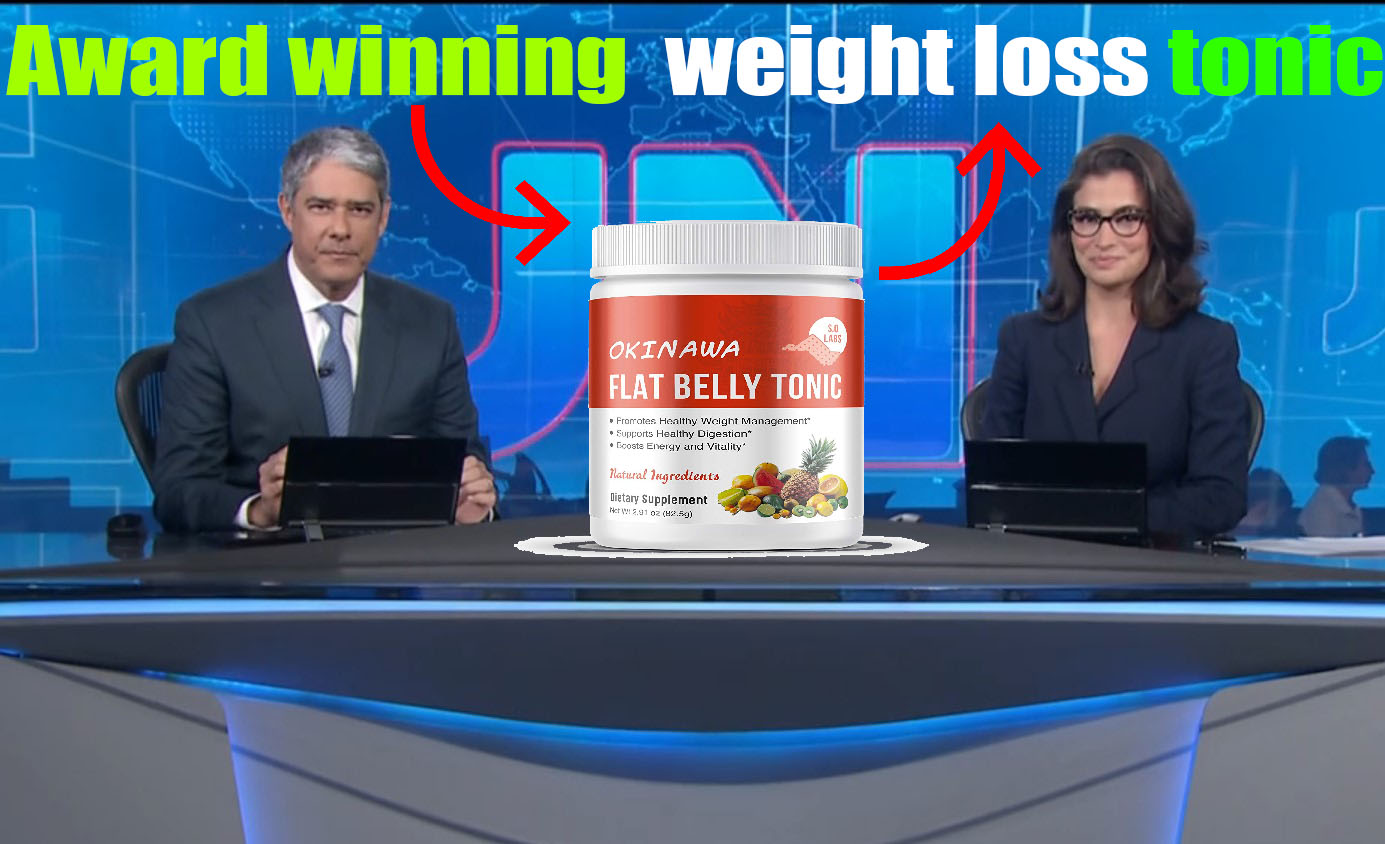Medi-Weightloss clinics are located around the country and offer food plans, counseling, and medication to promote weight loss. The company was founded in 2005 by an entrepreneur, Edward Kaloust,
with input from physicians and dietitians and has close to 100 franchise locations across the United States.
Check out Award winning weight loss tonic
If you are interested in using Medi-Weightloss, you should live near one of the company’s clinics. After an initial meeting, patients usually agree to weekly in-person meetings for the duration
of the weight loss process. This weekly check-in is a cornerstone of the program, so proximity is essential.
The physician-monitored program is popular among customers who are comfortable with a structured program and are ready to make significant changes to their diet to lose weight. But not everyone may be
able to stick to the restrictive low-carb plan long enough for weight loss to occur.
What Can You Eat?
Medi-Weightloss promotes a high-protein, hypocaloric (low-calorie) diet to
put the body into nutritional ketosis, a state in which you burn primarily stored fat (rather than glucose) for fuel. The plan is divided into three phases: "acute weight loss," "short-term maintenance,"
and "wellness."
Acute Weight Loss Phase
During this first phase, patients eat primarily protein foods to
induce ketosis. Calorie counts during this stage may be low: about 500–700 calories from protein sources, and then some additional calories from fruits, vegetables, healthy fats, and miscellaneous
items such as condiments and broths. Patients do not journal calories or
carbohydrate intake. Instead, they journal the number of protein calories consumed and servings of fruits, vegetables, healthy fats, and other foods.
For example, a patient may be prescribed 700 protein calories and at least two servings of fruits or veggies, two servings of fat, and four servings of other calories. The total number
of protein calories prescribed depends on results from metabolic testing and
activity level and is usually adjusted at least once during the acute phase.
Short-Term Maintenance Phase
As patients get closer to their weight loss goal, they move into the next phase during which most patients continue weekly visits. During this shorter maintenance stage, they slowly increase intake
of carbohydrates and
calories via servings of starch and dairy and increase servings of veggies, fruits, and fat. Protein calories may stay the same or change.
Wellness Phase
The wellness phase begins when patients meet their goal weight. They transition to monthly clinic visits and may undergo additional testing. During this phase, patients move to a 40/30/30 eating
plan where 40% of calories consumed come from carbohydrates, 30% come from fats, and 30% come from protein. This is similar to some other low-carb eating plans.
Check out Award winning weight loss tonic
Hydration is a vital component of the Medi-Weightloss diet. It's common for patients to become constipated and tired when they remove or reduce carbohydrate intake. Proper hydration may
reduce these symptoms, so a specific hydration recommendation is provided for each patient based on their weight and activity levels.
What You Need to Know
At the first meeting, patients meet with a medical professional for preliminary testing. Certain states require that this initial consult be with a board-certified MD (medical doctor) or
DO (doctor of osteopathic medicine). Some, but not all, of the doctors have additional training or credentials in obesity medicine.
In some states, the meeting might be with a nurse practitioner or a physician assistant. The medical doctor who oversees the clinic will review the medical information gathered at this consultation.
During the initial meeting, the provider will administer several tests, screenings, and other measurements that may include an EKG, urinalysis, blood panel, body composition analysis, and other
vitals. The provider also reviews your health history and current prescriptions.
After medical testing and consultation, the provider creates an individualized diet and exercise plan emphasizing accountability, education, and support. The plan may include prescriptions for weight
loss medications, diet supplements, or vitamin-based injections.
At weekly check-ins, your health is monitored, and supplements, prescriptions, or injections are administered. This is also a time when you can ask questions and make any necessary modifications
to your plan. You may meet with a nurse, medical professional, registered dietitian, or fitness trainer.
When you meet your goal weight, you transition to monthly meetings. During this phase, your provider may make adjustments to the diet and recommend supplements or testing during each meeting.
Resources and Tips
Pre-packaged meals are not provided, although the company sells some limited supplements and ready-to-eat menu items. Patients are given a food list to help them grocery shop, prepare food at home, and guide them to restaurants. Food journaling to promote accountability is the main focus of patient education. To stick to the eating plan, guidance and motivation are provided at weekly check-ins. An online patient portal includes recipes and tools to track progress.
Modifications
The company provides several different programs, including obesity management and metabolic syndrome services for adults and adolescents, medical nutrition therapy and counseling, behavioral
counseling, fitness recommendations, and screening for type 2 diabetes and other conditions.
Since the diet is personalized, it will be adjusted to meet each patient's needs. The medical staff at a Medi-Weightloss clinic may communicate with a patient's own healthcare provider.
What to Eat
-
Low-starch vegetables
-
Low-sugar fruits
-
Lean animal protein and fish
-
Dairy Products (in moderation)
-
Whole grains (in moderation)
-
Nuts, seeds, and oils
Personalized Nutrition
The Medi-Weightloss program is unique to every patient, but in general, it is a low-carb, low-calorie plan. Like other low-carb diets, the Medi-Weightloss program usually includes lean protein, low-starch vegetables, and healthy fats.
Like many weight loss plans that promote a healthy, balanced diet, a balanced Medi-Weightloss plan would likely restrict unhealthy foods such as those that are heavily processed or contain added sugar.
Sample Shopping List
The following shopping list is an example of what foods you might eat while following a Medi-Weightloss plan during the wellness phase. Note that this shopping list is not all-inclusive,
and if you choose to follow the Medi-Weightloss diet, you will be prescribed your own personalized nutrition program and list of foods to help you meet your health goals.
- Non-starchy vegetables (box choy, kale, lettuces, mustard greens, spinach, asparagus, broccoli, Brussels sprouts, cabbage, cauliflower, celery, cucumber, eggplant,
green beans, zucchini)
- Low-sugar fruits (avocado, apricot, orange, berries)
- Low-starch legumes (black beans, lentils, mung beans, tofu)
- Lean meats (chicken and turkey breast, lean ground beef, pork tenderloin)
- Fish (halibut, tuna, salmon, cod, haddock)
- Whole grains (quinoa, brown rice, amaranth)
- Dairy products (yogurt, cottage cheese, milk, or soy alternative)
- Nuts and seeds (almonds, walnuts, cashews, chia, flax, hemp)
- Oils (olive oil, coconut oil, peanut oil, sunflower oil)
- Eggs
Sample Meal Plan
What you eat on the Medi-Weightloss program will depend on your personalized nutrition program provided by a medical professional. But the following three-day meal plan offers an example
of what you might expect during the wellness phase of this plan. Note that this meal plan is not all-inclusive, and if you do choose to adhere to this diet, there may be other meals that
are recommended for you.
Day 1
- Breakfast: 2 Low-Carb Pancakes topped
with 1/4 cup mixed berries
- Lunch: 3/4 cup Avocado Chicken
Salad; 1 cup Rainbow Vegetable Soup
- Snack: 1 whole apricot
- Dinner: 1 serving Za'atar
Spiced Halibut With Cherry Tomatoes; 1 serving Roasted Asparagus
Day 2
- Breakfast: 1 serving Low-Carb
Frittata with spinach and mushrooms
- Lunch: 1 serving Tuna-Walnut
Salad; 1 cup Roasted Tomato and Fennel Soup
- Snack: 1 Peanut Butter Protein
Ball
- Dinner: 1 serving Roasted
Chicken With Turmeric and Fennel; 1/2 cup Shredded Brussels Sprouts and Lentil Salad
Day 3
- Breakfast: 1 serving Flax
Meal Peanut Butter Hot Cereal
- Lunch: 1 serving Low-Carb
Salad With Chicken, Bacon, and Apple; 1 cup Cauliflower-Cheese Soup
- Snack: 1/4 cup almonds
- Dinner: 1 serving Middle Eastern
Grilled Kofta Kebabs; 1/2 cup Lemony Roasted Broccoli
-
Check out Award winning weight loss tonic
Low-Carb Dinner Recipes
Pros and Cons
The idea of a structured, supervised eating plan may appeal to many people. However, be aware of some of the potential downsides of Medi-Weightloss.
Pros
Customized Plans and Support
Medi-Weightloss touts personalization as a big part of its strategy. While it's unclear how much the plans really differ from person to person, a tailored weight-loss plan is certainly more likely
to be effective than a one-size-fits-all approach. If you can attend regular meetings, you’ll get a boost of motivation and accountability as a result. The weekly check-ins are likely to
make you more successful, as they allow for additional adjustments and more support than many other diets.
Phased Approach
Low-carb diets often use a phased approach, and Medi-Weightloss is no different. In this way, followers can begin to determine how carbohydrates affect their weight and narrow in on a proportion
that works for them. It may also be easier to comply with a phased diet because the initial, very restrictive period is not too long.
Cons
Expensive
Check out Award winning weight loss tonic
According to the company, prices can vary by location. Customer reports for the weight loss program are fairly consistent. Most patients report paying $275 to $300 for the initial consultation and
$75 to $80 for each weekly visit. Supplements, prescriptions, and food are extra.
Some Medi-Weightloss locations accept insurance and offer in-network providers with some major insurance carriers. You may also be able to use a flexible spending account to pay Medi-Weightloss
expenses.
Accessibility
To make food choices that keep your body in a state of ketosis, you will need access to healthy, low-carbohydrate, protein-rich foods. Since the company does not provide packaged meals, you’ll
need to be comfortable shopping and preparing special meals at home. You must also visit a Medi-Weightloss center regularly and prepare your own meals and snacks that comply with the
eating plan's restrictions. These factors may not always be feasible for everyone.
Sustainability
The initial "acute" phase is not sustainable for any length of time because of its restrictiveness. The diet has a maintenance phase to help users transition out of ketosis and into a more traditional
lower-carb diet that must be followed indefinitely.
Lacks Sufficient Evidence
Check out Award winning weight loss tonic
The company reports that the program is based on scientific evidence. Currently, no independent research has been published in peer-reviewed journals to support this specific weight loss company.
Some studies support certain aspects of the plan, but also some that contradict it.1
May Be Difficult to Comply With
If you are surrounded by people who consume a standard American diet at home and work, you may have a harder time sticking to this plan. Most common foods (starchy carbohydrates like bread, pasta, rice,
baked goods) are not included in a ketogenic or low-carb diet. Cravings for
these foods may be difficult and even intolerable at times for some people.
Is Medi-Weightloss a Healthy Choice For You?
While Medi-Weightloss's clinical approach is fairly unique, some aspects of the program resemble other diet plans with similar strategies. The Jenny Craig diet, for example, includes all meals and snacks.
These run approximately $550 to $800 per month, plus program fees. Like Medi-Weightloss, Jenny Craig offers in-person support and counseling. Meals and snacks can be purchased at the center or ordered
online and delivered.
Though it's not a commercial weight loss plan, the ketogenic diet is a low-carb plan that also aims to put the body in a state of ketosis to promote weight loss. The main expenses are groceries
and additional resources such as cookbooks, but many people find the protocol difficult to stick with for the long term. There's also a very low-calorie diet, which a doctor prescribes. On
this plan, all solid food is eliminated in favor of specially formulated meal-replacement drinks.
When compared to federal guidelines for a healthy, balanced diet to support health and weight management, Medi-Weightloss isn't quite in alignment. The U.S. Department of Agriculture's 2020–2025 Dietary
Guidelines for Americans suggests a balanced mix of protein, carbohydrates, fruits and vegetables, and fat.2 The
Medi-Weightloss plan cuts back severely on carbohydrates during the first two phases and continues to restrict them during the wellness phase.
Check out Award winning weight loss tonic
Medi-Weightloss is also considered a low-calorie diet, and the daily calorie requirements will vary depending on an individual's weight loss prescription plan. While creating a calorie deficit is
an effective way to lose weight, your body and brain still need calories to function. That's why it can be helpful to know how many calories you should be consuming each day, whether you're looking to
lose weight or maintain it.
For a sustainable rate of weight loss, the USDA suggests reducing calories for weight loss. This number can vary greatly depending on a person's age, sex, weight, height, and level of physical activity.
To calculate your own daily calorie target, use this calculator.
Health Benefits
Weight loss is likely on the Medi-Weightloss program, particularly since the plan offers personalized nutrition and medical guidance. The program also provides ongoing counseling and support. Health
experts suggest that patients who receive regular face-to-face counseling are more likely to stick to a weight loss plan long enough to see results. Other studies have shown that remote weight-loss
counseling can provide the same benefit.
Some research supports a ketogenic diet for weight loss, a similar strategy to the Medi-Weightloss protocol. However, the research on the keto diet is mixed, with higher-quality studies pointing to its lack of effectiveness.
Check out Award winning weight loss tonic




Comments
Post a Comment